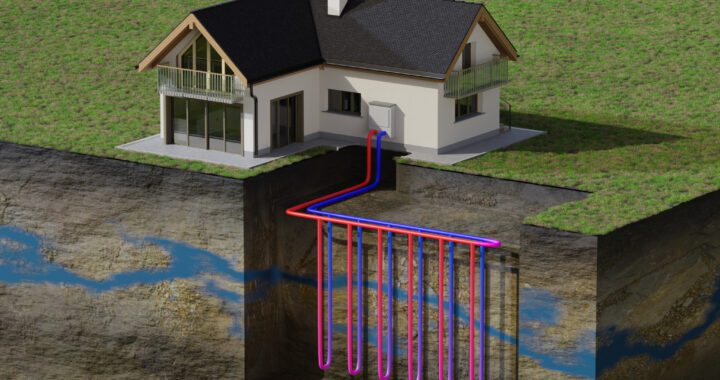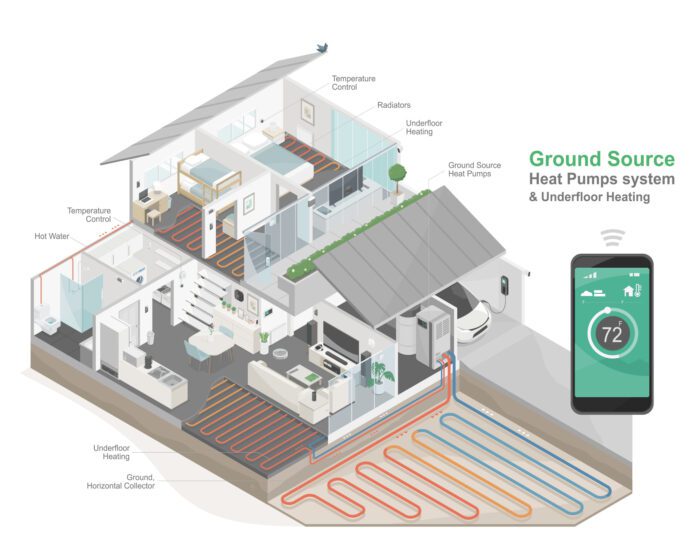Using ground source heat pumps can be a great way to save energy costs in your home. They are virtually maintenance free and are long lasting. They do come with a hefty up-front cost, but they will provide a warmer home in winter and cooler in summer for decades to come.
Geothermal HVAC systems exchange heat between the ground and the air
Unlike conventional central air conditioning systems, geothermal systems use the constant temperature of the earth as a heat exchange medium. Geothermal heating and cooling systems can save up to 50% off your heating and cooling costs. They are also environmentally friendly.
These heating and cooling systems are highly efficient. They deliver electricity utilization rates up to 5:1 and can reduce your energy bills by up to 70 percent. They also use no fossil fuels and are considered green by the United States Environmental Protection Agency. They are also eligible for federal and state incentives.
Geothermal systems can be installed in a variety of ways. Some are water-to-water and other systems use a piping system through the walls. They can also take in groundwater and use a discharge pipe to send heat back to the ground.
Installation costs vary depending on the size of your home and whether or not you can qualify for incentives. It can also depend on your area’s utility rates.
They’re virtually maintenance-free
Whether you’re looking to replace your existing system or looking to install a system in a new building, Ground Source Heat Pumps are a viable option for energy efficiency and cost savings. They’re relatively maintenance-free and offer high-efficiency for space heating.
The best part is that a properly installed system can last for decades. There are various types of geothermal heat pumps, including a ground source heat pump (GHSP). This is a technology that taps into the earth’s constant temperature to provide both heating and cooling.
A GHSP uses a large loop of underground pipes to circulate water and antifreeze. This fluid is heated by the earth, and then used to provide hot water for the home. When the system is in cooling mode, it functions much like a refrigerator.
Although there are other types of heat pumps available, a ground source heat pump is arguably the best choice for homeowners looking for energy-efficient alternatives to conventional heating and cooling.
The best part is that they’re relatively maintenance-free. This is especially important when you consider that nearly 40% of emissions in the United States are attributed to the heating and cooling of buildings.
Long term savings
Using a ground source heat pump can help you save money, improve the environment and make your home more energy efficient. Compared to traditional heating and cooling systems, geothermal systems are far more energy efficient and can offer the same or better savings.
Ground source heat pumps are like refrigerators, but instead of air, they draw heat from the ground. The unit can be located underground or inside the home.
The biggest benefit of geothermal systems is the savings they offer. They can save up to 70% on heating and cooling costs. You can cut your energy costs by installing a geothermal unit, but it’s important to note that the actual savings will vary from home to home.
The best way to find out if a ground source heat pump will work for you is to speak with a professional installer. They will know exactly what type of unit will work best for you.
Geothermal heating and cooling systems have increased in popularity over the last few years, thanks in part to a growing demand for more energy-efficient HVAC systems. In fact, the global market for ground source heat pumps increased by 12 percent per year.
They’re not a DIY project
Unless you have experience installing heat pumps, they’re probably not for you. There’s a lot more to it than just plugging in a unit. If you want to install a ground source heat pump, you’ll need to find a qualified HVAC company. The costs of installation can be quite high. You’ll also have to replace your radiators and add insulation.
Depending on your property’s size, you’ll need at least an eight-kilowatt heat pump to get the most efficient results. If you have a modern four-bedroom house, you might need a twenty-kilowatt unit. You may also need to replace your hot water cylinder.
You may be able to get some grant money towards the cost of installing a ground source heat pump. These grants are usually open to low-income households. You can apply for one by contacting a local energy agency. They’ll usually cover most of the costs of professional installation.
The UK government will also subsidise your heat pump to save on the rather large up-front costs. These can be very useful in paying for the cost of installation. However, it’s important to make sure that the system you’re buying is well-designed. If you buy a system that’s over-sized, you’ll end up paying more in the long run.

